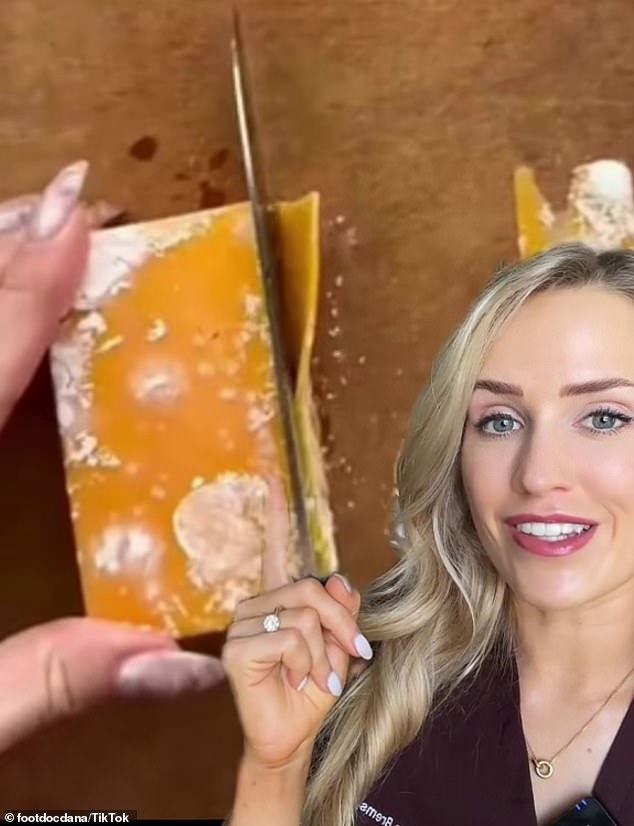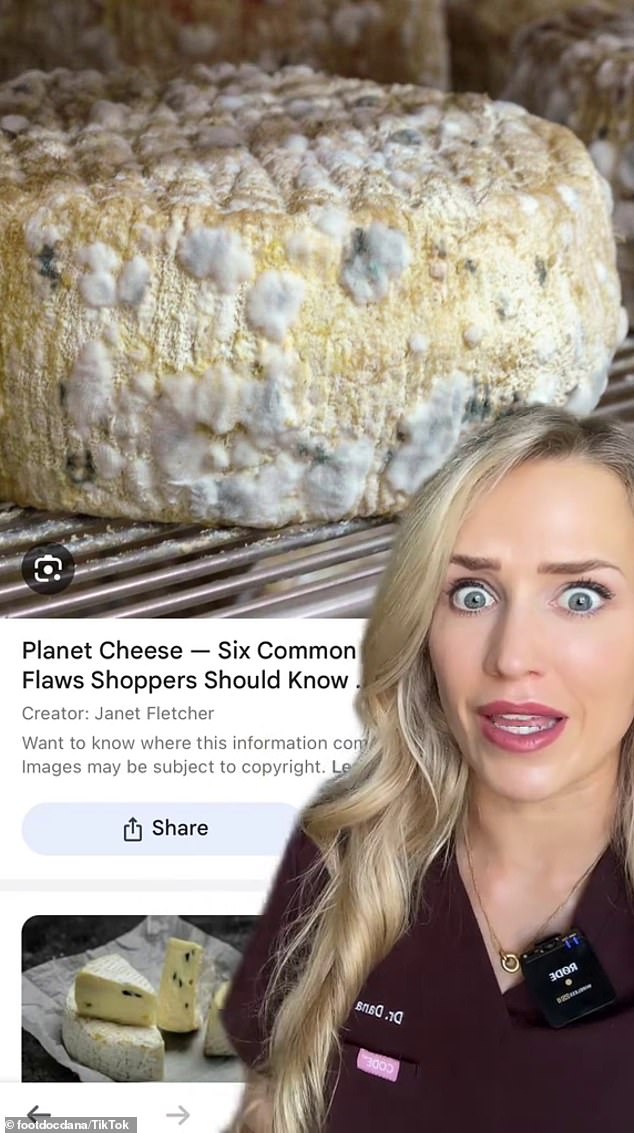I’m a doctor – this is why you should never cut the mould off your old cheese and eat it
Cheese has become a ‘luxury purchase’ for many as the cost of living in Australia takes hold. But those who want to extend the shelf life of cheese by cutting away mould may pay the price.
American surgeon Dr. Dana Brems warns against removing visible mold from cheese and eating the rest, even though many have been doing so for years to save money.
While it may be tempting to stick a knife into a moldy wedge of cheddar or brie, there are a few things to keep in mind if you want to avoid nausea, vomiting, or allergic reactions.
American surgeon Dr. Dana Brems has warned against removing visible mold from cheese and eating the rest, even though many have been doing so for years to save money
‘Mold is like an iceberg: on top you see some pieces, but deeper there is more mold that you cannot see with the naked eye,’ says Dr. Brems.
She said people who want to save their dairy products should distinguish between softer and harder cheeses.
“If you have a hard cheese, like cheddar, you can cut at least an inch around and under the moldy area and it should still be fine to eat because mold doesn’t penetrate these firm cheeses as well,” she said.
However, the medical expert advised washing the knife between cuts to prevent cross-contamination.

She said those looking to save their dairy products should distinguish between the softer and harder types of cheese.
According to Dr. Brems, softer cheeses, such as blue cheese, brie, camembert and gorgonzola, are much more difficult to save once they have unsightly mold spores on them.
“With softer cheeses like Brie or cottage cheese, it’s hard to tell how deep the mold actually penetrates,” she said.
‘In addition, these cheeses have a higher water activity, which allows hydrobacteria to grow in addition to mould.
‘If you see mold on soft cheese, it’s best to throw it all in the trash.’
The doctor said that any pre-cut or grated cheese that was moldy should also be thrown away immediately and not eaten.

Dr. Brems said that mold growing on softer cheeses poses a greater risk of nausea or vomiting, and that any soft cheese with visible mold should be thrown away and not eaten.
Dr. Brems added that if you have a weakened immune system or are allergic to mold, you should not risk eating spoiled cheese and simply throw it away.
Australian food scientist Gary Kennedy agrees with Dr Brems that soft cheeses become dangerous when mould develops.
“Mold is like a blue bottle. The bit you see at the top you can touch, but the bits underneath are poison,” he said.
Dr. Kennedy added that this applies to all soft foods, such as jam and tomato sauce: it is never safe to remove the mold and just eat the rest.
He explained that bread falls into the middle category between soft and hard foods.
He said that if a slice of bread shows signs of mold, you should remove a few slices on each side to make sure you’ve removed the roots, and the rest should be safe to eat.
Dr. Kennedy warned that repeated exposure to mold can have similar effects on the body as chemical poisoning, and that this is not something to be underestimated.
Many Europeans and Australians were furious that they were advised to throw away moldy cheese.
“This is a completely American view and not correct. If the mold is black, red/orange, then yes, it is waste. You can absolutely cut away white, blue, green and yellow mold and it is fine, if not better,” said one cheesemonger.
‘In France we eat a lot of moldy cheese. Food legislation in Europe is also very strict and I have never heard of a medical case of food poisoning from moldy cheese,’ agreed another.
But Dr Kennedy said the fungus we have in Australia is different to the fungus in other parts of the world, so it’s not worth messing with.
